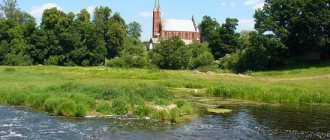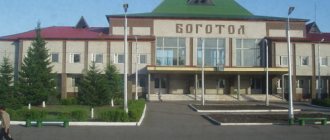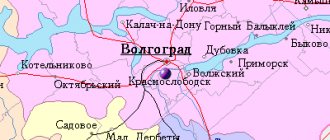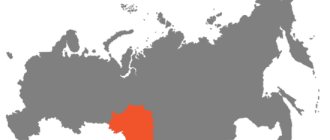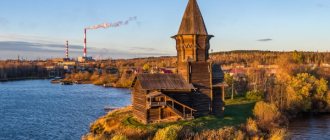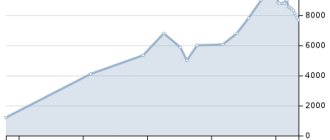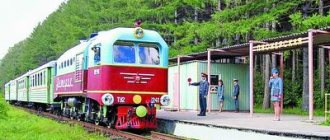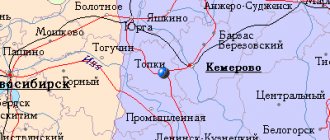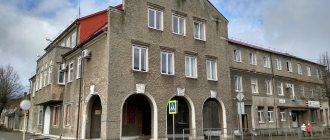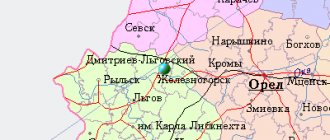City in Vologda Oblast, Russia
| Kharovsk Kharovsk | |
| City [1] | |
| In Kharovsk | |
| Location of Kharovsk | |
| Kharovsk Location of Kharovsk Show map of Russia Kharovsk Kharovsk (Vologda region) Show map of the Vologda region | |
| Coordinates: 59°57'N 40°12'E / 59.950°N W. 40.200 ° E. / 59,950; 40.200 Coordinates: 59°57'N 40°12'E. / 59.950°N 40.200°E / 59.950; 40.200 | |
| A country | Russia |
| Federal subject | Vologda region [1] |
| Administrative region | Kharovsky district [1] |
| City of district significance | Kharovsk [2] |
| Based | 1903 [3] |
| City status from | 1954 [4] |
| Height | 160 m (520 ft) |
| Population (2010 Census) [5] | |
| • General | 10 079 |
| • Evaluate (2018) [6] | 9 099 ( -9,7% ) |
| Administrative status | |
| • Capital from | Kharovsky district [1], city of regional significance Kharovsk [2] |
| Municipal status | |
| • Municipal district | Kharovsky municipal district [7] |
| • Urban village | Urban settlement Kharovsk [7] |
| • Capital from | Kharovsky municipal district [7], urban settlement Kharovsk [7] |
| Timezone | UTC+3 (MSK[8]) |
| Postal code [9] | 162250, 162251 |
| OKTMO ID | 19652101001 |
Kharovsk
(Russian: Kharovsk) is a city and the administrative center of Kharovsky District in Vologda Oblast, Russia, located on the left bank of the Kubenna River, 90 km (56 mi) north of Vologda, the administrative center of the region. Population: 10,079 (2010 census); [5] 11,460 (2002 census); [10] 13,083 (1989 census). [eleven]
History[edit]
In 1894, construction of a railway line between Vologda and Arkhangelsk began. [ citation needed
] It was decided that the railway should take the shortest route rather than through existing settlements, and it was eventually built through the current location of Kharovsk.
[ citation needed
] In 1894, the Kubino railway station was opened on this site, which was later renamed Leshchevo; in 1914 the station was renamed Kharovskaya [12].
Kharovskaya village
(Kharovskaya), also known as
Kharovsky
(Kharovsky)[12], founded in 1903 in connection with the construction of a glass factory. [3] In 1919, a sawmill was built. [3] Kharovsky belonged to Kadnikovsky Uyezd in the Vologda Governorate. [13]
On July 15, 1929, the districts were abolished, the provinces became part of the Northern Territory, and the Kharovsky district was formed. [4] In 1932, the administrative center of the Kharovskaya district received the status of a workers' village. [12] This was followed by the construction of a number of industrial enterprises, including a dairy plant. [3] In 1954, Kharovskaya was given city status and its current name. [4]
Kharovsk
(Vologda Region)
OKATO code:
19252501
Founded:
1903
Urban settlement since:
1932
City since:
1954 City of district subordination (Kharovsky district, Vologda region)
Center:
Kharovsky district
The city was formerly called:
| Kharovsky | 1903 | 1954 |
| Telephone code (reference phone) | |
| 81732***** | 22-2-22 |
Deviation from Moscow time, hours:
0
Geographic latitude:
59°57′
Geographic longitude:
40°12′
Altitude above sea level, meters:
160 Sunrise and sunset times of the Sun and Moon in the city of Kharovsk
Links[edit]
Notes[edit]
- ^ abcde Resolution No. 178
- ^ abc Law No. 371-OZ
- ^ abcd Encyclopedia of Russian Cities
. Moscow: Great Russian Encyclopedia. 2003. pp. 504–505. ISBN 5-7107-7399-9. - ^ a b c Information on changes in the administrative-territorial structure and network of party and Komsomol bodies of the Vologda region (1917–1991) (in Russian). Archives of Russia. Retrieved October 17, 2011.
- ^ a b Federal State Statistics Service (2011). All-Russian Population Census 2010. Volume 1 [All-Russian Population Census 2010, vol. 1]. All-Russian Population Census 2010 [All-Russian Population Census 2010] (in Russian). Federal State Statistics Service.
- "26. The size of the permanent population of the Russian Federation by municipalities as of January 1, 2022". Federal State Statistics Service. Retrieved January 23, 2022.
- ^ abcde Law No. 1127-OD
- "On the Calculation of Time". Official Internet portal of legal information
. June 3, 2011. Retrieved January 19, 2022. - Post office. Information and computing center of OASU RPO. ( Post office
).
Search for postal service objects ( postal Search for objects
) (in Russian) - ↑
Federal State Statistics Service of Russia (May 21, 2004). The population of the Russian Federation, cities of the Russian Federation as part of federal districts, urban settlements, settlements, settlements, settlements is 3 thousand or more people. [Population of Russia, its federal districts , subjects of the Federation, districts, urban settlements, rural settlements - administrative centers and rural settlements with a population of more than 3000 people] (XLS). All-Russian Population Census of 2002 [All-Russian Population Census of 2002] (in Russian). - All-Union Population Census of 1989 Population of Union and Autonomous Republics, Autonomous Regions and Districts, Territories, Regions, Urban Settlements and Village District Centers [All-Union Population Census of 1989: Current Population of Union and Autonomous Republics, Autonomous Regions and Districts, Territories, Regions , districts, urban settlements and villages performing the functions of district administrative centers]. All-Union Population Census of 1989 [All-Union Population Census of 1989] (in Russian). Institute of Demography of the National Research University: Higher School of Economics [Institute of Demography of the National Research University: Higher School of Economics]. 1989 - via Demoscope Weekly
. - ^ abc N. V. Soldatova (2006). G. V. Sudakov (ed.). Vologda Encyclopedia (PDF) (in Russian). Vologda: VSPU, Rus. p. 228. ISBN 5-87822-305-8. Retrieved November 22, 2013.
- About the first commercial and industrial establishments of Kharovskaya station (in Russian). State Archive of the Vologda Region. 2004. Retrieved November 27, 2013.
- Enterprises and organizations of the Kharovsky municipal district (in Russian). Administration of the Kharovsky municipal district. Archived from the original on May 2, 2008. Retrieved October 17, 2011.
- Kharovsky Historical and Art Museum (in Russian). Russian Network of Cultural Heritage. Archived from the original on October 7, 2013. Retrieved November 22, 2013.
- Information (in Russian). MX-SPORT.RU. Archived from the original on February 3, 2011. Retrieved October 18, 2011.
Map
| Kharovsk: maps |
Kharovsk: photo from space (Google Maps) Kharovsk: photo from space (Microsoft Virtual Earth)
| Kharovsk. Nearest cities. Distances in km. on the map (in brackets along roads) + direction. Using the hyperlink in the distance , you can get the route (information courtesy of the AutoTransInfo website) | |||
| 1 | Estuary | 44 (109) | SW |
| 2 | Syamzha | 49 (51) | IN |
| 3 | Kadnikov | 50 (75) | YU |
| 4 | Falcon | 53 (78) | YU |
| 5 | Vozhega | 58 (72) | WITH |
| 6 | Shuyskoye | 78 (161) | SE |
| 7 | Dairy | 79 (128) | YU |
| 8 | Vologda | 83 (113) | YU |
| 9 | Kirillov | 101 (253) | Z |
| 10 | Fedotovo | 102 () | SW |
| 11 | Konosha (Arkhangelsk region) | 113 (149) | WITH |
| 12 | Gryazovets | 118 (161) | YU |
| 13 | Sheksna | 125 (185) | SW |
| 14 | Lipin Bor | 127 (290) | Z |
a brief description of
Located on the Kharovskaya ridge, on the left bank of the river. Kubena, 89 km north of Vologda. Railway Kharovskaya station.
Territory (sq. km): 18
Information about the city of Kharovsk on the Russian Wikipedia site
Historical sketch
It emerged as a village during the construction of a station and bridge at the intersection of the Vologda - Arkhangelsk railway with the river. Cubens. The station was opened in 1898 and until 1904 it was called Kubino, then Leshchevo and from 1914 Kharovskaya.
In 1903, the village of Kharovsky was founded near the station during the construction of a glass factory. In 1919, a sawmill was built. In the 1930s timber mill N45, a dairy factory, and a food processing plant were built.
Workers' settlement of Kharovsk since December 31, 1932. City since October 28, 1954.
In 1962, a sleeper impregnation plant was built.
Economy
Timber processing plant "Lesdok", timber (lumber, house parts, etc.), glass (chemical bottles, battery vessels), sleeper plant, technological equipment plant (equipment for agricultural industries). Flax plant, food and bakery factories, dairy plant.
75% of the territory of the Kharovsky district is occupied by forest. Logging - Semigorsk timber industry enterprise.
They grow grain crops, flax, and perennial herbs. Meat and dairy cattle breeding.
Deposits of peat, brick and ceramic clays, glass sands, gravel, tuff.
Main enterprises
FORESTRY, WOOD PROCESSING AND PULP AND PAPER INDUSTRY
JSC "Lesdok"
162200, Vologda region, Kharovsky district, Kharovsk, st.
Krasnoe Znamya, 25 Offers:
lumber, door and window blocks, molded products, industrial wood
Museums, galleries, exhibition halls
Kharovsky History and Art Museum 162250, Vologda region, Kharovsky district, Kharovsk, st. Svobody, 20 Phone(s): 2-1967
Architecture, sights
Kharovsk is predominantly built up with 3- and 5-story buildings.
In the village of Kumzero there is the Church of Frol and Laurus (17th century).
In the Kharovsky district there are protected natural monuments: Azletsky forest (752 hectares), Pustoramensky forest.
| Population by year (thousands of inhabitants) | |||||||
| 1926 | 0.5 | 1996 | 12.9 | 2007 | 11.0 | 2015 | 9.4 |
| 1939 | 7.4 | 1998 | 12.6 | 2008 | 10.9 | 2016 | 9.3 |
| 1959 | 11.3 | 2000 | 12.4 | 2010 | 10.6 | 2017 | 9.2 |
| 1970 | 14.1 | 2001 | 12.4 | 2011 | 10.1 | 2018 | 9.1 |
| 1979 | 12.9 | 2003 | 11.5 | 2012 | 9.8 | 2019 | 8.9 |
| 1989 | 13.1 | 2005 | 11.2 | 2013 | 9.6 | 2020 | 8.8 |
| 1992 | 13.2 | 2006 | 11.1 | 2014 | 9.5 | 2021 | 8.7 |
Population
| Population | |||||
| 1926[3] | 1939[3] | 1959[4] | 1970[5] | 1979[6] | 1989[7] |
| 500 | ↗7400 | ↗11 260 | ↗14 102 | ↘12 859 | ↗13 083 |
| 1992[3] | 1996[3] | 1998[3] | 2000[3] | 2001[3] | 2002[8] |
| ↗13 200 | ↘12 900 | ↘12 600 | ↘12 400 | →12 400 | ↘11 460 |
| 2003[3] | 2005[3] | 2006[3] | 2007[3] | 2008[9] | 2009[10] |
| ↗11 500 | ↘11 200 | ↘11 100 | ↘11 000 | ↘10 900 | ↘10 759 |
| 2010[11] | 2011[3] | 2012[12] | 2013[13] | 2014[14] | 2015[15] |
| ↘9998 | ↗10 100 | ↘9843 | ↘9617 | ↘9506 | ↘9422 |
| 2016[1] | |||||
| ↘9292 | |||||
Excerpt characterizing Kharovsk
“A wife is for advice, a mother-in-law is for greetings, and nothing is dearer than your own mother!” - he said. - Well, are there any children? – he continued to ask. Pierre's negative answer again apparently upset him, and he hastened to add: “Well, there will be young people, God willing.” If only I could live in the council... “It doesn’t matter now,” Pierre said involuntarily. “Eh, you’re a dear man,” Plato objected. - Never give up money or prison. “He sat down better and cleared his throat, apparently preparing for a long story. “So, my dear friend, I was still living at home,” he began. “Our patrimony is rich, there is a lot of land, the men live well, and our home, thank God.” The priest himself went out to mow. We lived well. They were real Christians. It happened... - And Platon Karataev told a long story about how he went to someone else’s grove behind the forest and was caught by a guard, how he was whipped, tried and handed over to the soldiers. “Well, the falcon,” he said, his voice changing with a smile, “they thought grief, but joy!” My brother should go, if it were not for my sin. And the younger brother has five boys himself - and look, I have only one soldier left. There was a girl, and God took care of her even before she became a soldier. I came on leave, I’ll tell you. I see they live better than before. The yard is full of bellies, women are at home, two brothers are at work. Only Mikhailo, the youngest, is at home. Father says: “All children are equal to me: no matter what finger you bite, everything hurts. If only Plato hadn’t been shaved then, Mikhail would have gone.” He called us all - believe me - he put us in front of the image. Mikhailo, he says, come here, bow at his feet, and you, woman, bow, and your grandchildren bow. Got it? speaks. So, my dear friend. Rock is looking for his head. And we judge everything: sometimes it’s not good, sometimes it’s not okay. Our happiness, my friend, is like water in delirium: if you pull it, it swells, but if you pull it out, there’s nothing. So that. - And Plato sat down on his straw. After being silent for some time, Plato stood up. - Well, I have tea, do you want to sleep? - he said and quickly began to cross himself, saying: “Lord, Jesus Christ, St. Nicholas, Frol and Lavra, Lord Jesus Christ, St. Nicholas!” Frol and Lavra, Lord Jesus Christ - have mercy and save us! - he concluded, bowed to the ground, stood up and, sighing, sat down on his straw. - That's it. “Put it down, God, like a pebble, lift it up like a ball,” he said and lay down, pulling on his greatcoat. -What prayer were you reading? asked Pierre. - Ass? - said Plato (he was already falling asleep). - Read what? I prayed to God. Don't you ever pray? “No, and I pray,” said Pierre. - But what did you say: Frol and Lavra? “But what about,” Plato quickly answered, “a horse festival.” And we must feel sorry for the livestock,” Karataev said. - Look, the rogue has curled up. She got warm, the son of a bitch,” he said, feeling the dog at his feet, and, turning around again, immediately fell asleep. Outside, crying and screams could be heard somewhere in the distance, and fire could be seen through the cracks of the booth; but in the booth it was quiet and dark. Pierre did not sleep for a long time and, with open eyes, lay in his place in the darkness, listening to the measured snoring of Plato, who lay next to him, and felt that the previously destroyed world was now being erected in his soul with new beauty, on some new and unshakable foundations. In the booth into which Pierre entered and in which he stayed for four weeks, there were twenty-three captured soldiers, three officers and two officials. All of them then appeared to Pierre as if in a fog, but Platon Karataev remained forever in Pierre’s soul as the strongest and dearest memory and personification of everything Russian, kind and round. When the next day, at dawn, Pierre saw his neighbor, the first impression of something round was completely confirmed: the whole figure of Plato in his French overcoat belted with a rope, in a cap and bast shoes, was round, his head was completely round, his back, chest, shoulders, even the hands that he carried, as if always about to hug something, were round; a pleasant smile and large brown gentle eyes were round. Platon Karataev must have been over fifty years old, judging by his stories about the campaigns in which he participated as a long-time soldier. He himself did not know and could not determine in any way how old he was; but his teeth, bright white and strong, which kept rolling out in their two semicircles when he laughed (which he often did), were all good and intact; There was not a single gray hair in his beard or hair, and his whole body had the appearance of flexibility and, especially, hardness and endurance.
